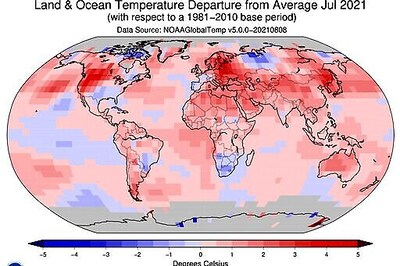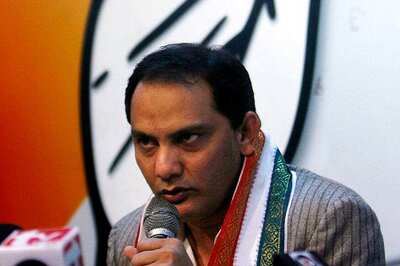
views
BENGALURU: Real yields on major sovereign bonds are deeply negative and expectations for positive returns anytime soon have disappeared as aggressive monetary easing and asset purchase programmes have much further to run, a Reuters poll showed.
For well over a decade, top central banks have adopted aggressive monetary policy tools in an attempt to suppress long-term borrowing costs to keep credit flowing to drive their economies back to higher growth and inflation.
Real, or inflation-adjusted, yields on U.S. 10-year Treasuries plunged below zero this year amid the coronavirus pandemic, joining Japanese, German and British equivalent debt that has for much of the past decade given negative returns.
Although Reuters polls for many years have been wrong-footed in predicting bond yields would rise, the Sept. 17-24 poll of over 100 fixed-income strategists showed major government debt yields were still expected to increase around 20-30 basis points in a year.
But expectations for real returns over the coming year for those bonds adjusted against inflation were still negative, despite the massive and increasing government borrowing loads.
More than three-quarters of strategists, or 57 of 75 with a view, said the most likely path for sovereign yields would be to stay around current levels or be range-bound – not very far from this year’s lows and well below their pre-COVID-19 rates.
That is largely a reflection of low-inflation expectations and major central banks’ pledges to keep benchmark policy rates near zero, or below in some cases, and bond-buying programmes predicted to be extended beyond when the current plans expire.
“We continue to see bond yields being depressed and being held down by the policies of central banks to keep rates low, despite concerns of debt issuance that is simply being overshadowed by continued strong demand for bonds,” said Elwin de Groot, head of macro strategy at Rabobank.
“You can always argue that demand for bigger government support leads to more debt issuance, therefore leading to higher interest rates, but that is not the pattern we’ve seen so far. That is because central banks play a major role here – whatever is being issued, is being taken out of the market, again, by those central banks’ policies.”
The U.S. 10-year Treasury yield was forecast to rise over 25 basis points to 0.93% in a year, about half the expected average inflation rate, suggesting negative real returns over the coming year.
That 12-month ahead consensus was the lowest since polling began more than 20 years ago, reflecting the Federal Reserve’s recent shift in policy to tolerate inflation running hot for an extended period and to hold fire on rates for years to come.
Nearly 80% of strategists, or 35 of 45 with a view, said the Fed’s promise of near-zero interest rates for several years would keep major government bond yields “low.” Only about 20% of respondents said it would “not stop them from drifting higher.”
That lines up with expectations of currency analysts in a separate Reuters poll who said the biggest driver of the dollar’s supremacy for well over two years – interest rate incentive – had fallen as reflected in lower yields on U.S. assets after the Fed’s announcement.
The dollar’s fall has fuelled emerging market currencies and their sovereign debt this year, with expectations in the latest poll for that trend to hold over the next 12 months, despite a record increase in government borrowing in those countries.
But over 50% of 37 strategists with a view said emerging economies’ government debt was most at risk of a sell-off over the coming year. Nearly 40% of respondents said corporate debt was at risk, but less than 10% said that of major developed economies’ sovereign bonds.
With aggressive monetary easing by the European Central Bank, Bank of Japan and the Bank of England expected to extend well beyond this year, predictions in the latest poll were for real yields to be negative on German, Japanese and UK bonds.
The general notion that low interest rates would eventually spur price pressures has not materialised, underscoring the view that most major central banks that have not met their inflation target for several years would struggle to do so for many years to come.
“We, as an economic society, need to be humble about our ability to understand inflation,” said Guy LeBas, chief fixed-income strategist at Janney Montgomery Scott.
Disclaimer: This post has been auto-published from an agency feed without any modifications to the text and has not been reviewed by an editor



















Comments
0 comment